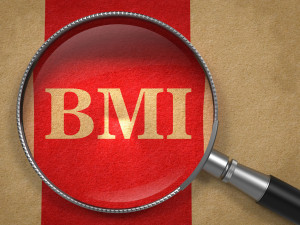
Body Mass Index, or BMI is a good starting point when it comes to assessing overall health and getting in shape, but it hardly tells the entire story. Just like the number on your scale isn’t always a good indicator that you’re in heart-healthy shape.
The BMI is a simple number that takes into account both height and weight. Its categories are as follows:
- Underweight= <18.5
- Normal Weight= 18.5-24.9
- Overweight= 25-29.9
- Obese= 30 or greater
However, a BMI calculator (click here, to calculate your BMI) does not take your level of physical fitness or bone structure–or body frame. It’s also unable to differentiate between muscle and fat, which is why body builders often show a BMI in the obese range. For instance, Arnold Schwarzenegger had a BMI of 33 when he was crowned as Mr.Universe in 1967. The same can be said for those that look thin. Just because someone appears skinny, does not mean they’re in the clear. Often seemingly skinny men and women with high metabolisms who don’t exercise carry visceral (belly) fat that pads their vital organs. Visceral fat drives up the risk for diabetes, heart disease, and stroke.
There are those that argue that the entire system needs to be reworked (it was first devised by a Belgian polymath between 1830 and 1850, after all). So don’t use a “normal” BMI as an excuse not to exercise or eat well. That can actually be detrimental to your health.
It’s important to aim for a healthy BMI, but it’s also vital to adapt a well-balanced healthy diet and exercise routine.
So check your BMI, and then check out the produce section of the grocery store.














-300x200.jpg)



